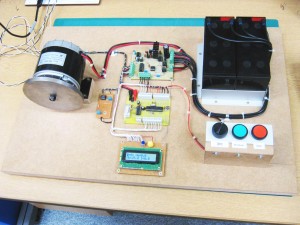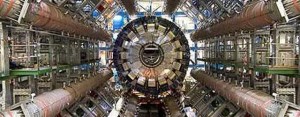
The latest version of the CAN-bus/GPS (8440) module is now available for the Prosig P8012, P8020 and P8048 systems. The CAN-bus/GPS module has been in use in the field for some time now, recording CAN-bus information for display and analysis alongside noise, vibration, temperature and other signals captured by P8000 systems. The DATS software treats all analog and CAN-bus parameters in the same way so any mixture of parameters can be selected for display in real-time and subsequent processing. CAN-bus parameters can also be used to trigger immediate and pre-triggered captures and to stop captures.
The 8440 module now has an option to capture GPS parameters in addition to the other signals. The data capture software now also supports a realtime GPS track overlayed on a map. Velocity and altitude data measured by the GPS system can also be displayed alongside any other measurement channels in realtime displays. The latitude, longitude, altitude and velocity data is stored with with all the other sensor data captured by the P8000 system and is available to view and process in the resulting datasets. These signals can then be used to classify or select data for further analysis. For example you could choose to process data when the vehicle is on a particular road or a particular section of the track, or if you find an unusual event use the GPS data to give a position and time or the event.
Differential GPS
Prosig employ a differential GPS (DGPS) module that provides comparable performance with many of the more expensive GPS systems. The DGPS system uses a global network of ground based reference stations to provide enhanced position information which results in a 1 metre accuracy with 95% confidence and velocity accuracy approaching 0.05m/s. The standard option provides an update rate of 10 per second, with a further option to provide update at 20 times per second for more demanding applications. From a user perspective in-vehicle tests show the GPS track placing the vehicle on the corresponding side of the road or track with a high degree of repeatability. Also acceleration measurements derived from the velocity provided by the GPS system have been show to match those derived from the vehicle speed taken from the CAN-bus.
CAN-BUS Logging
The CAN-bus/GPS card provides the capability to capture vehicle parameters normally broadcast on the bus or those that have to be actively requested from the CAN controller (that is, from regulatory PIDs, Manufacturer’s PIDs and Direct Memory Reads). With this module fitted P8000 systems can capture analog signals together with a variety of vehicle parameters available via the CAN-bus and, of course, GPS information.
In addition the DATS Acquisition software now offers a dual mode logging where low speed parameters such as CAN-bus parameters, GPS parameters and temperatures can be captured continuously and high speed parameters such as audio and vibration signals can be acquired on event detection such as brake pedal action or rpm level. This makes it possible to run long term tests where only certain events need to be captured in detail such as brake testing or road impacts. Post processing can use the low speed data to extract data associated with different events or locations for further processing which combines the information associated with these events.
Chris Mason
Latest posts by Chris Mason (see all)
- Rotating Machinery Vibration Analysis: Keeping Your Machines Humming Along - November 27, 2023
- Vibration Control and Isolation: A Comprehensive Guide for Engineers - November 6, 2023
- Modal Analysis in the Real World - October 6, 2023





Pingback: Everything You Ever Wanted To Know About GPS But Were Afraid To Ask « Prosig Noise & Vibration Blog